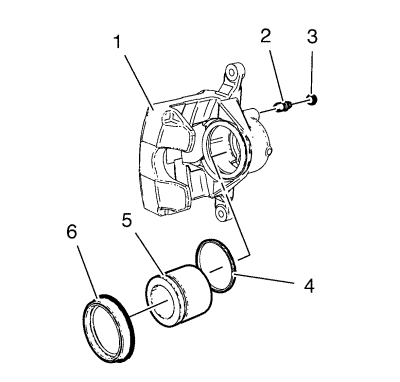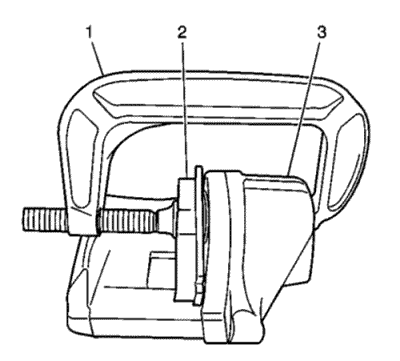
- Inspect the brake calliper housing (1) for cracks, excess wear, and/or damage. If any of these conditions are present, the brake calliper requires replacement.
- Inspect the calliper piston dust boot seal (6) for cracks, tears, cuts, deterioration and/or improper seating in the calliper body. If any of these conditions are present, the brake calliper requires overhaul or replacement.
- Renew brake calliper bleeder valve cap (3) if missing.
- Check for blocked bleeder valve (2).

- Inspect for smooth and complete travel of the calliper pistons into the calliper bores:
The movement of the calliper pistons into the calliper bores should be smooth and even. If the calliper piston is seized or difficult to bottom, the calliper requires overhaul or replacement.
Insert a discarded inner brake pad (2) or block of wood in front of the piston. Using a large C-clamp (1) installed over the body of the calliper (3) and against the brake pad or block of wood, slowly bottom the piston in the bore.

